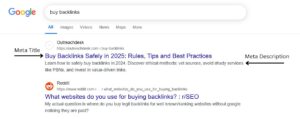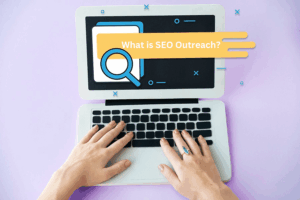Search engine optimization (SEO) is the practice of optimizing websites and online content to rank higher in search engine results pages (SERPs) for relevant queries or keywords. It’s a crucial component of any successful digital marketing strategy, driving organic (non-paid) traffic to your website.
But SEO isn’t just about stuffing keywords mindlessly into your site. It’s a holistic approach to creating an amazing user experience that keeps search engines and human users happy.
In this definitive guide, we’ll cover everything you need to know about SEO—how it works, why it matters, and the key strategies for ranking on top.
How Search Engines Work
To understand SEO, you first need to grasp how search engines like Google function. Here’s a simple breakdown:
Crawling
Search engines use automated bots (crawlers/spiders) to scour the internet, following links and discovering new content. The bot “reads” your website’s HTML code, images, videos, and other elements to understand what each page contains.
Indexing
The bot then adds the URLs, content, images, videos etc. that it discovers to the search engine’s massive index (database). Think of the index as a huge library where a copy of all discoverable online content is stored and organized.
Ranking
When someone types a query into the search box, the search engine uses complex algorithms to determine the most relevant results from the index. It considers hundreds of ranking factors to display the pages best matching the query intent.
The exact ranking algorithms are a closely guarded secret. Still, we know some major factors include content quality, keyword relevance, user experience, mobile-friendliness, page speed, and external popularity signals like backlinks.
Why SEO Matters
Now you know how search works from a technical perspective. But why should you invest time and resources into SEO? Here are the key reasons:
- Increased Visibility & Traffic With over 90% of all web traffic starting from search engines, SEO helps you tap into this massive source of potential customers or subscribers. The higher you rank for relevant keywords, the more organic traffic flows to your site.
- Cost-Effective Marketing Unlike paid ads, you don’t have to pay for each click in organic search. While SEO requires an upfront investment of time and effort, it yields compounding returns over time as a sustainable, cost-effective marketing channel.
- Better User Experience SEO best practices focus on improving usability, site speed, and overall experience, benefiting both search engines and human users. A well-optimized site provides better value to visitors.
- Competitive Advantage If you aren’t doing SEO, your competitors are probably outranking you. SEO gives you an edge to stand out in crowded online markets.
- Long-Term Branding Appearing in the top results for your target keywords builds brand credibility, trust and mindshare with potential customers over a sustained period.
The 3 Pillars of SEO
SEO can be divided into three core components:
Technical SEO
Technical SEO focuses on optimizing the non-content elements that affect a site’s crawlability and indexability. This includes:
- Site architecture and navigation
- Mobile-friendliness and responsiveness
- Page speed optimization
- Indexing with robots.txt and sitemaps
- Structured data and schema markup
- Canonicalization and duplicate content
- SSL/HTTPS security
Mastering technical SEO ensures search engines can easily crawl, understand and index your site, providing a solid foundation for other optimizations.
On-Page SEO
On-page SEO refers to all the content and HTML source code optimizations within your actual website pages, such as:
- Keyword research and targeting
- Title tags and meta descriptions
- Header tags (H1, H2, etc.)
- Content optimization (body copy, images, videos, etc.)
- Internal linking structure
- URL structure
The goal is to organize and present your content in a relevant, valuable, and easy way for users and search engines to interpret.
Off-Page SEO
While on-site optimizations are crucial, search engines also look at external popularity signals to judge a site’s authoritativeness. Off-page SEO covers these external tactics:
- Link building (Buy Backlinks)
- Social media promotion and engagement
- Local citations for local businesses
- Guest posting and content syndication
- Influencer and PR outreach
Building a robust off-site SEO profile strengthens your brand’s authority, credibility, and trust signals, which are crucial SEO ranking factors.
The Key Strategies
With a solid understanding of what SEO is and its three pillars, here are the top strategies and best practices to rank on top:
Keyword Research and Targeting Identify the search queries or keywords your target customers are using. Use tools like Google’s Keyword Planner or Semrush to find high-volume, relevant keywords with lower competition. Then, strategically incorporate those keywords into your page titles, headings, content and more.
Creating High-Quality Content Today’s search engines prioritize high-quality, in-depth content that genuinely helps users. Follow content SEO best practices like:
- Research your topic thoroughly
- Organizing content in a clear, scannable way
- Use your target keyword and synonyms naturally
- Include multimedia like images and videos
- Adding statistics, quotes and examples
- Optimizing for featured snippets
Optimizing On-Page Elements Various on-page elements impact your rankings. Optimize your:
- Title tags with attention-grabbing page titles
- Meta descriptions to boost click-through rates
- Header tags to reinforce keyword relevance
- Internal linking for better site structure
- Image alt text for accessibility and image SEO
- Schema markup for richer search snippets

Improving User Experience Google wants to rank websites that create a seamless experience for human users. Follow UX best practices like:
- Fast page load times
- Mobile-friendly responsive design
- Easy navigation and internal linking
- Secure encrypted HTTPS connections
- Engaging multimedia and visuals
- Clutter-free, scannable text formatting
Technical SEO Optimizations Ensure a solid technical foundation by:
- Using a SEO-friendly web hosting platform
- Optimizing robots.txt and XML sitemaps
- Creating a logical URL structure
- Using canonical tags to avoid duplicate content
- Implementing accelerated mobile pages (AMP)
- Compressing images and other assets
- Enabling GZIP compression for faster page load
Link Building and Off-Page SEO External backlinks from authoritative, trusted websites act as endorsements for your content and boost rankings. Popular link-building tactics include:
- Guest posting on relevant industry blogs
- Fixing broken links on other websites
- Creating informative infographics and visuals
- Reaching out for product reviews and mentions
- Monitoring and disavowing toxic/spammy links
Local SEO for Local Businesses If you have a physical storefront or service local customers, focus on local SEO tactics like:
- Claiming and optimizing Google Business Profiles
- Building localized content and landing pages
- Getting listed in online directories and review sites
- Earning backlinks from local organizations and publications

Tracking SEO Success Finally, use tools like Google Analytics and Search Console to track key SEO metrics like:
- Organic search traffic growth
- Top ranking keywords and pages
- Click-through rates from SERPs
- Bounce rates and dwell times
- Conversions from organic search
Monitor these insights, tweak your SEO strategy and continually improve!
The Bottom Line
SEO is the combination of strategies to increase your website’s visibility and rankings in organic search results. By fully optimizing your site for technical considerations, on-page content, external authority, and a fantastic user experience, you can drive highly targeted organic traffic at minimal costs.
While SEO takes time, effort and patience to master, its rewards are immense – a constant stream of potential leads and customers landing directly on your business from the world’s top search engines.
So if you want to future-proof your online presence and marketing ROI, start prioritizing and investing in SEO today!





